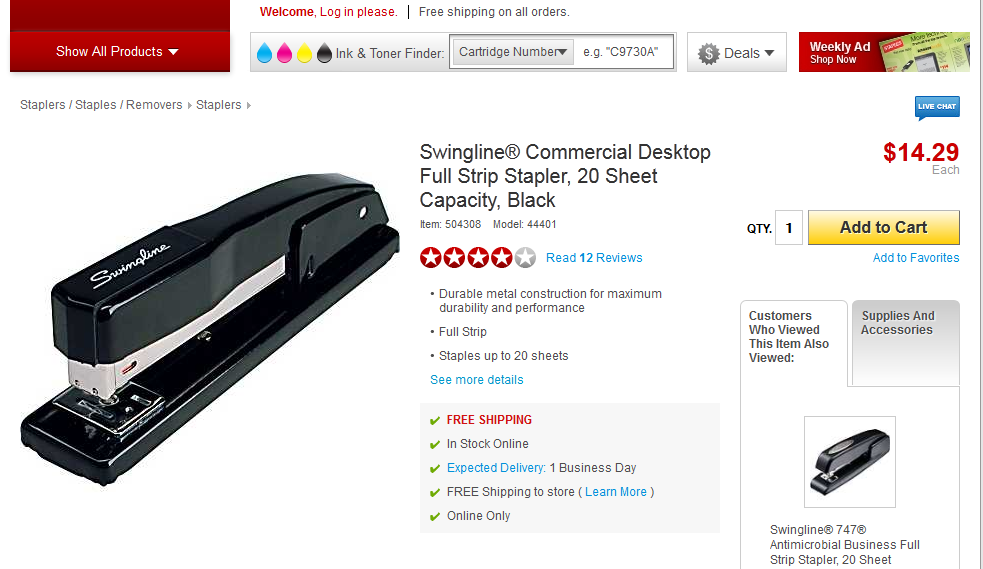Staples.com & Others Charge You Different Prices Based On Where You Live
The Wall Street Journal recently noticed that Staples.com, which would be the website for Staples, not only charges different prices depending on where you live, but that those differences seem tied to the user’s proximity to an Office Depot or Office Max store.
Using the classic Swingline stapler (though, alas, not a red one), the Journal found that some people who lived outside the reach of those two stores were seeing a $15.79 price for the item on Staples.com. Those who lived within driving distance of Staples’ competitors were seeing $14.29 (The Journal did find some users even saw prices as low as $13.57 for the stapler).
What’s also interesting is that Staples.com is fickle about whether to offer you the discount or not.
The Journal tested every ZIP code in the country 20 times and determined the frequency with which users in those ZIP codes were seeing the discount.
You can go HERE to enter your ZIP and see how likely you are to get the cheaper price on the stapler.
For example, I entered my current ZIP code in Philadelphia and found that I would receive the discount 85% of time. According to OfficeMax.com and OfficeDepot.com, I’m at least 9 miles away from the closest outlet for both stores.
But when I entered the ZIP code for my old apartment in Brooklyn, where I quite literally woke up looking at the exterior of an Office Depot for 10 years, the Journal’s research finds that I would always get the discount.
A rep for Staples confirmed to the Journal that prices do vary based on location and cited “a variety of factors.”
And Staples isn’t alone in charging different prices to customers depending on where they live. A spool of wired ordered on HomeDepot.com will cost $70.80 to a customer in Ashtabula, OH, while their pal in Monticello, NY, will pay $77.87.
This idea of charging less for customers who leave near competitors’ stores seems to run counter to price variations you normally see in a retail chain. It gives the discount to shoppers located in areas with higher concentrations of major retailers — areas that historically charge more because of higher labor and real estate costs — while it asks customers in more remote regions to pay more.
According to the Journal’s analysis, the average income in ZIP codes that were likely to receive the discount was $59,900, while ZIP codes more likely to not receive the discount had an average income of $48,700.
Want more consumer news? Visit our parent organization, Consumer Reports, for the latest on scams, recalls, and other consumer issues.


